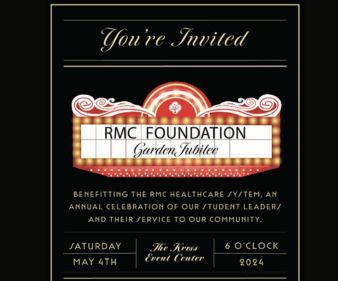Calhoun County, AL – September is National Preparedness Month which concludes on September 30th with National Preparedness Day. The federal government has created National Preparedness Month as an observance each September to raise awareness about the importance of preparing for disasters and emergencies that could happen at any time. Launched in 2004, National Preparedness Month (NPM) is FEMA’s national annual preparedness outreach. NPM is managed and sponsored by FEMA’s Ready Campaign. The Ready Campaign, in conjunction with the Ad Council, aims to educate and empower Americans during NPM and throughout the year to prepare for and respond to all types of emergencies, including natural disasters and potential terrorist attacks.
The Calhoun County EMA has also created a information for kid, including a comic book, to help them understand basic preparedness. The kids targeted message is called “BE A READY KID!”. The message is that emergencies and disasters can be scary, but there are ways to help you stay safe before, during, and even after a disaster. Their website provides games kids can play games to become a Disaster Master and learn how to build an emergency kit. Kids will meet a friend named Pedro the Penguin, who will teach them all about staying safe. Kids will even be able to make their own emergency plan with their family. Click here to download the comic book. Click here for games. For a supply list to create your own kit click here.
The Calhoun County EMA has created a checklist for adults and teens as well:
1. Be Informed
It is important to know the hazards in your community. These hazards can be natural, like severe weather, or man-made, such as a hazardous materials incident. Take time to discuss these hazards with your family, including how can prepare for them and how you will respond if faced with one.
Some of the top natural hazards in Calhoun County include:
-
Tornadoes
-
Severe thunderstorms, high winds, and lightning
-
Ice Storms
Being informed also includes knowing how to get emergency information. In an emergency, you may hear information broadcast using something called the Emergency Alert System (EAS). The EAS provides emergency information on the radio, over TV channels, and on cable TV (some stations).
Another important method of receiving emergency information is Wireless Emergency Alerts (WEA). WEA alerts are sent to smartphones capable of receiving them (most smartphones). You do not have to ‘sign up’ for these alerts–your phone will receive them automatically. It is important NOT to ‘cancel’ or ‘disable’ WEA alerts when you receive them, or you may not receive future alerts.
Nixle Text Alerts
Calhoun County offers a FREE text and email alert service called Nixle. Calhoun County EMA will send out important information such as; Tornado Warnings, Severe Thunderstorm Warnings, Winter Storm Warnings, Hazardous Materials Warnings, etc. To sign up for Nixle text alerts text CalhounEMA to 888-777.
NOAA Weather Radio
A NOAA Weather Radio is an important item to have in your disaster supply kit because it not only lets your receive severe weather watches and warnings but it can also be a way authorities broadcast important information during an emergency. To ensure that you are receiving information for Calhoun County, make sure your radio is set to Channel 4 and S.A.M.E. county code 001015.
For weather radio programming instructions, please visit this page hosted by the National Weather Service (NWS) in Birmingham: http://www.srh.noaa.gov/bmx/?n=nwr
Outdoor Warning Sirens
An important part of being informed also means knowing your siren tones.
In Calhoun County, we use different tones for tornadoes, a hazardous material accident, an attack on the United States, and siren tests
The severe weather tone is a long, high pitched tone.
The tone for a hazardous material accident is a high-low tone (like a European ambulance siren).
The sound for the siren test, conducted the first Tuesday of each month at 4:00 PM, is a long wail tone.
he sound for a hostile attack on the United States is a fast wail tone.
2. Create an Emergency Plan
Your family may not be together when a disaster strikes! It is important to plan in advance what you will do if a disaster happens and you are separated.
You should talk with your family about:
-
How you will contact each another,
-
Where you will meet up and get back together, and
-
What you will do in different situations, like being at work, at school, at nights, and on weekends, if one of you is out of town on business, etc.
Talking about your plan now will help reduce fear and anxiety if a disaster happens.
Here are some tips in mind when creating emergency plan:
-
Create a list of addresses and phones numbers for the places where your family spends the most time along with family members’ cell phone numbers and work numbers. Each family member should have a copy of the list and a copy should be placed in your disaster kit.
-
Identify meeting places in your neighborhood (in case of a house fire) and meeting places outside your neighborhood in case you have to evacuate.
-
Select an out-of-town relative or friend to be the “family contact person”. After a disaster, it is often easier to make a long distance call than a local call. If separated, family members should call the “contact person” and tell him or her where they are. Everyone must know the contact’s name, address, and phone number.
-
Know what to do if authorities instruct you to shelter in place or evacuate.
-
Practice and maintain your plan by reviewing and updating it every six months or with any major changes in your family.
3. Take Action
Putting together a disaster supply kit requires very little time or money but can be invaluable to you in the days following a disaster. Most items in your kit should be in a sturdy, waterproof container and include the things your family will need (don’t forget the pets) for the first three days after a disaster
You don’t have to create your kit in one day; take time each week to place a few of the items you need in your kit. Some suggested items include:
-
Water, at least 1 gallon per person per day
-
Non-perishable food and a manual can opener
-
Paper cups, plates, plastic utensils, and paper towels
-
Battery-powered radio and a NOAA weather radio with extra batteries for each
-
Flashlights with extra batteries
-
Hygiene products such as baby wipes, extra soap and shampoo, toothpaste, toothbrushes, toilet paper, etc.
-
Fire Extinguisher
-
First Aid Kit
-
Tools, including a wrench or pliers to turn off utilities
-
Copies of important family documents, insurance policies, etc.
Other things to think about putting in your kit:
-
Comfort items for kids, such as books, puzzles, and toys
-
Money, both cash and change, in case credit and debit cards do not work
-
A complete change of clothing for each family member including a pair of sturdy shoes
-
Prescription medications and extra glasses/contacts
-
Specialty items for infants, the elderly or anyone in your home with special needs









